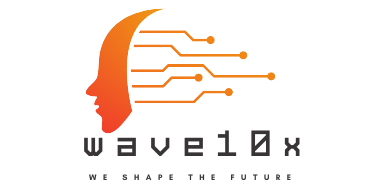Digital X-ray Machine: A Revolutionary Advancement in Medical Imaging
Introduction
In today’s rapidly evolving healthcare landscape, technological advancements continue to reshape the way we diagnose and treat medical conditions. Among the many breakthroughs, digital x-ray machines stand out as a game-changer in the field of medical imaging. These machines have revolutionized traditional x-ray imaging by offering enhanced image quality, reduced radiation exposure, and streamlined workflow. In this blog post, we will explore the ins and outs of digital x-ray machines, their features, benefits, and how they have transformed radiology practices worldwide. So, let’s dive in and discover the fascinating world of digital x-ray technology.
The Basics of Digital X-ray Imaging
X-rays have long been an invaluable tool in diagnosing a wide range of medical conditions. Traditional film-based x-ray imaging has served as a diagnostic staple for decades. However, digital x-ray machines have taken this diagnostic modality to a whole new level. Unlike film-based systems, which require chemical processing and physical storage of images, digital x-ray machines employ the use of digital detectors to capture and produce images. The process involves the x-ray machine emitting a controlled amount of radiation through the patient’s body. The digital detector then captures the x-rays that pass through the body, converting them into a digital image that can be viewed on a computer screen.
Benefits of Digital X-ray Machines
Digital x-ray machines offer several key advantages over their traditional film-based counterparts. Let’s delve into some of the most noteworthy benefits of this groundbreaking technology:
- Improved Image Quality: Digital x-ray machines produce high-resolution images that offer enhanced clarity and detail. The digital nature of these images allows for easy manipulation, zooming, and adjustment of brightness and contrast levels, ensuring radiologists obtain the most accurate diagnostic information.
- Lower Radiation Exposure: One of the significant concerns with traditional x-rays is the potential radiation exposure to both patients and medical professionals. Digital x-ray machines require significantly less radiation to produce diagnostic images, minimizing the risks associated with radiation exposure.
- Instant Image Availability: Gone are the days of waiting for films to be processed. With digital x-ray machines, the captured images are available almost instantly for review. This expedites the diagnostic process, allowing healthcare providers to make timely decisions regarding patient care.
- Enhanced Workflow and Efficiency: Digital x-ray machines streamline the entire imaging process. From capturing the images to storing and retrieving them, the digital workflow is much quicker and more efficient. Radiologists can view and analyze images remotely, improving collaboration and saving valuable time.
- Cost-effectiveness: While initial investments in digital x-ray machines may be higher, they offer long-term cost savings. The elimination of film and chemical costs, as well as the reduction in storage space requirements, contribute to significant financial benefits over time.
Applications of Digital X-ray Machines
Digital x-ray machines are widely used across various medical specialties. The versatility of this technology makes it indispensable in numerous clinical scenarios. Here are some of the key applications of digital x-ray machines:
1. General Radiography: Digital x-ray machines are commonly used in general radiography to diagnose and monitor various conditions, such as fractures, lung diseases, and abdominal abnormalities.
2. Orthopedics: Orthopedic practices heavily rely on digital x-ray imaging to assess bone fractures, joint abnormalities, and degenerative conditions. The high-definition images produced by digital x-ray machines aid surgeons in preoperative planning and postoperative evaluation.
3. Dentistry: Dentists have embraced digital x-ray machines as an essential diagnostic tool in the field of dentistry. These machines play a crucial role in detecting dental caries, periodontal diseases, and evaluating the bone structure in the oral cavity.
4. Emergency Medicine: In emergency departments, digital x-ray machines facilitate rapid evaluation of trauma cases, allowing healthcare providers to promptly diagnose and treat injuries, including fractures, dislocations, and chest trauma.
5. Pediatrics: Digital x-ray machines are instrumental in diagnosing various conditions in pediatric patients, such as respiratory infections, congenital abnormalities, and bone fractures. The lower radiation exposure associated with these machines makes them particularly suitable for use in pediatric populations.
Selecting the Right Digital X-ray Machine
Choosing the appropriate digital x-ray machine is crucial for ensuring optimal diagnostic capabilities and patient care. Healthcare providers should carefully consider several factors when selecting a digital x-ray machine that best suits their needs:
- Image Quality and Resolution: Evaluate the image quality and resolution capabilities of the machine. Look for features such as high-definition imaging, adjustable brightness and contrast levels, and digital noise reduction to ensure accurate and detailed diagnostic information.
- Workflow Efficiency: Consider the workflow efficiency of the machine. Look for features such as rapid image acquisition, seamless integration with picture archiving and communication systems (PACS), and compatibility with existing radiology software.
- Radiation Dose Control: Pay attention to the radiation dose control capabilities of the machine. Look for features such as dose monitoring, automatic exposure control, and pediatric settings to minimize radiation exposure while maintaining image quality.
- Patient Comfort and Safety: Consider features that enhance patient comfort and safety. Look for features such as adjustable patient positioning, ergonomic design, and dose reduction mechanisms to ensure a positive patient experience.
- Vendor Support and Service: Evaluate the vendor’s reputation, experience, and quality of support and service. Look for vendors that provide comprehensive training, ongoing technical support, and timely maintenance services to maximize machine uptime.
The Future of Digital X-ray Machines
As technology continues to evolve at an unprecedented pace, the future of digital x-ray machines holds immense promise. Several exciting trends are shaping the future of this revolutionary technology:
1. Artificial Intelligence (AI) Integration: AI algorithms are being developed to assist radiologists in the interpretation of digital x-ray images. These algorithms can improve diagnostic accuracy, detect abnormalities, and provide automated measurements, ultimately enhancing patient care.
2. Portable and Handheld Devices: The emergence of portable and handheld digital x-ray machines is enabling healthcare providers to bring imaging capabilities directly to the patient’s bedside. These devices offer convenience, ease of use, and real-time imaging capabilities in various clinical settings.
3. 3D and Tomosynthesis Imaging: The integration of 3D and tomosynthesis imaging with digital x-ray machines allows for enhanced visualization of anatomical structures. These techniques provide radiologists with more comprehensive diagnostic information, particularly in complex cases.
4. Integration with Electronic Health Records (EHR): Digital x-ray machines are seamlessly integrating with EHR systems, allowing for efficient image storage, retrieval, and sharing. This integration promotes collaboration among healthcare professionals and facilitates continuity of care.
Conclusion
Digital x-ray machines have transformed the landscape of medical imaging, offering improved image quality, reduced radiation exposure, and enhanced workflow efficiency. These machines have found applications across various medical specialties, empowering healthcare providers to make accurate and timely diagnoses. When selecting a digital x-ray machine, it is essential to consider factors such as image quality, workflow efficiency, radiation dose control, patient comfort, and vendor support. As technology continues to advance, the integration of AI, portability, 3D imaging, and EHR integration will further enhance the capabilities of digital x-ray machines. Embracing this cutting-edge technology empowers healthcare professionals to provide the highest standard of patient care and diagnostics in today’s rapidly evolving healthcare landscape.

